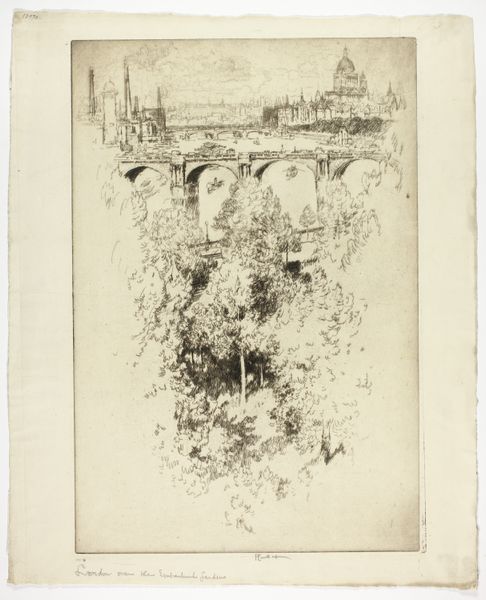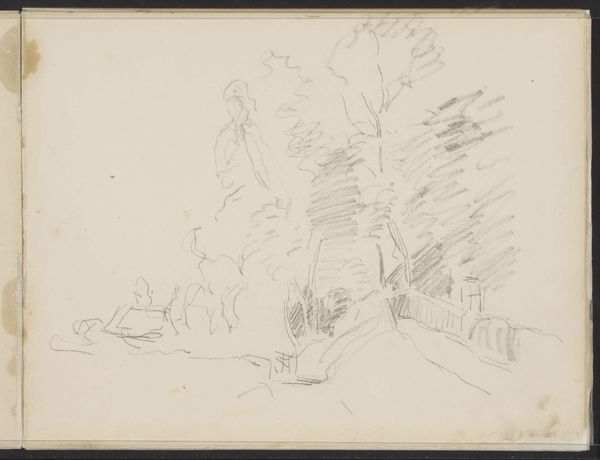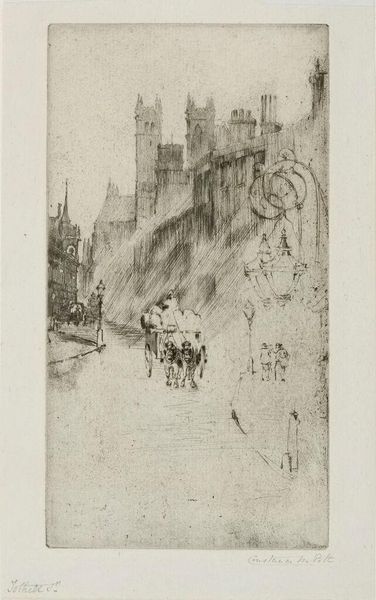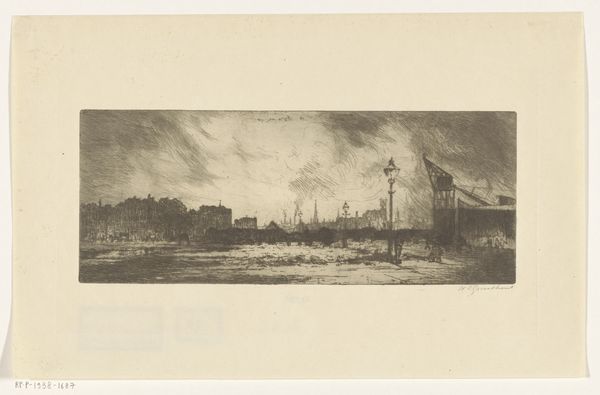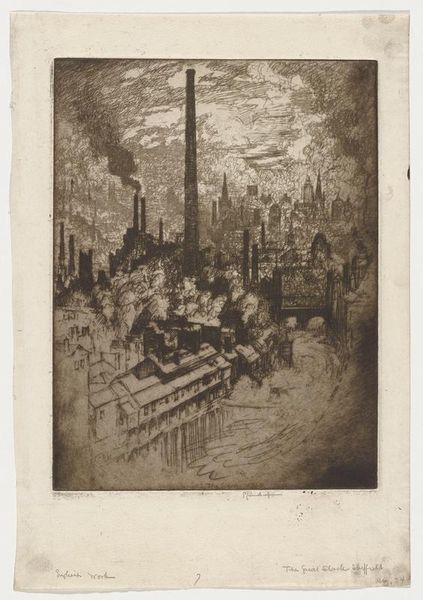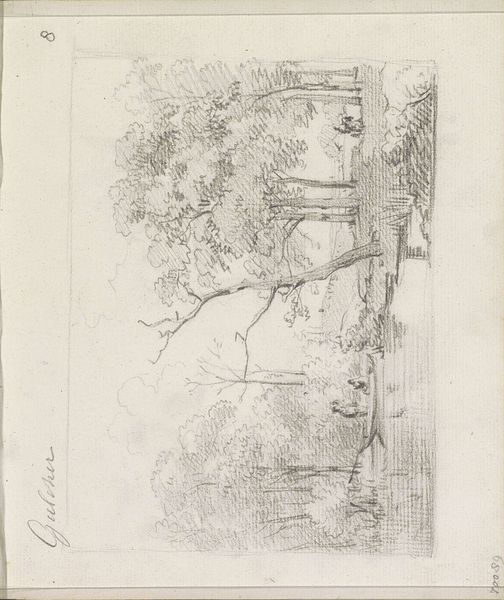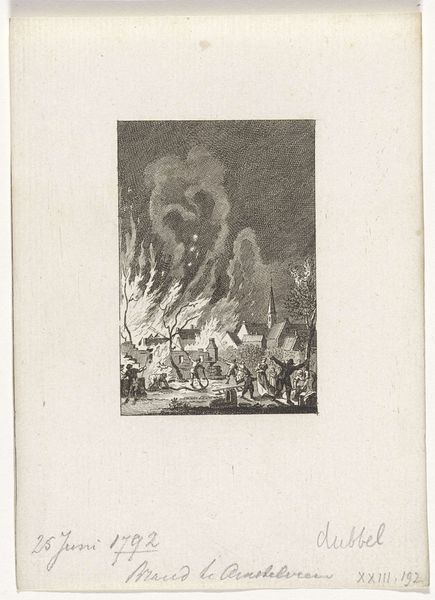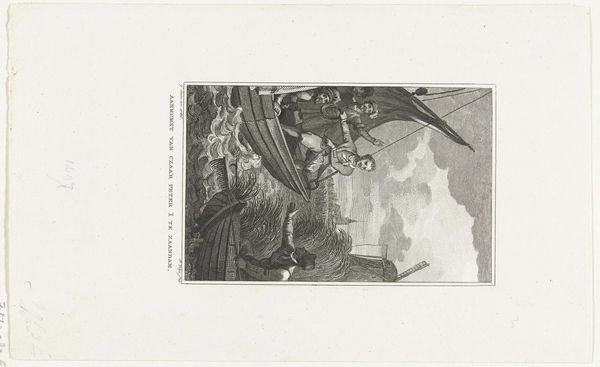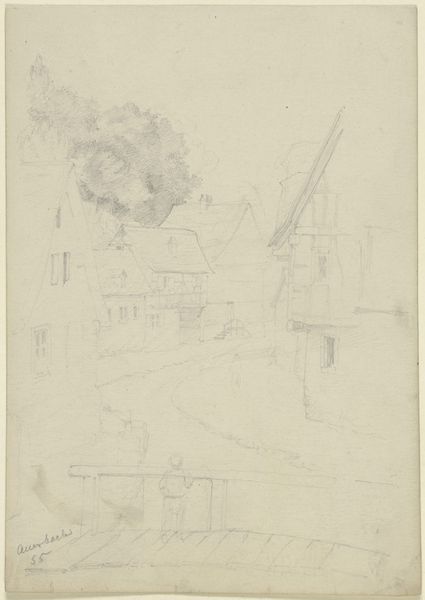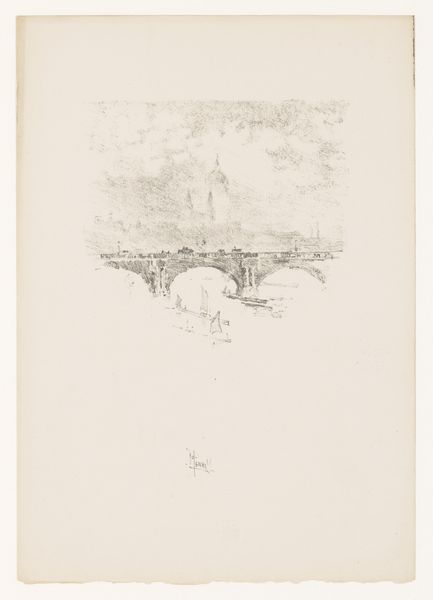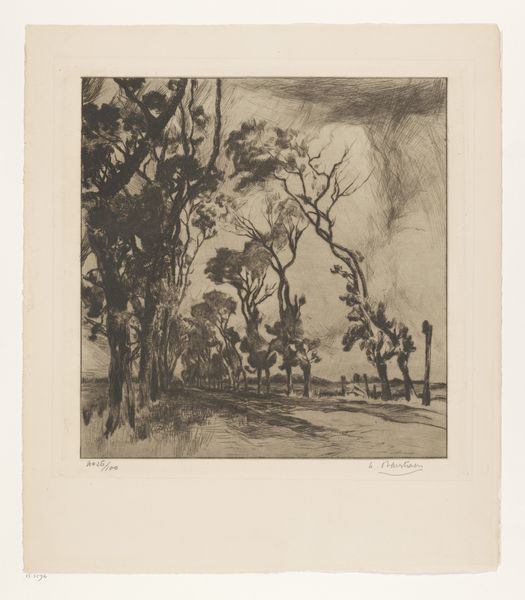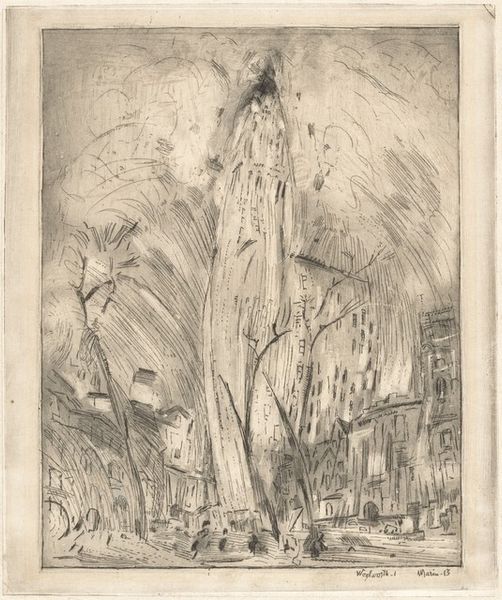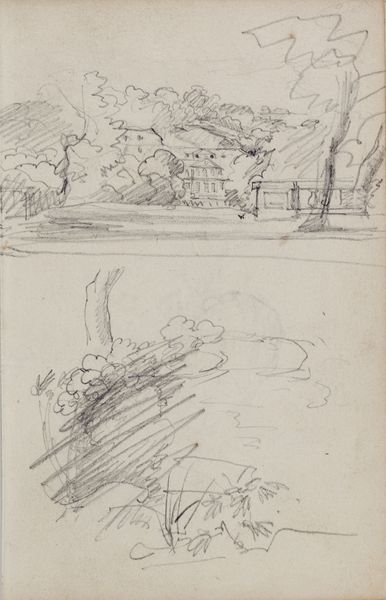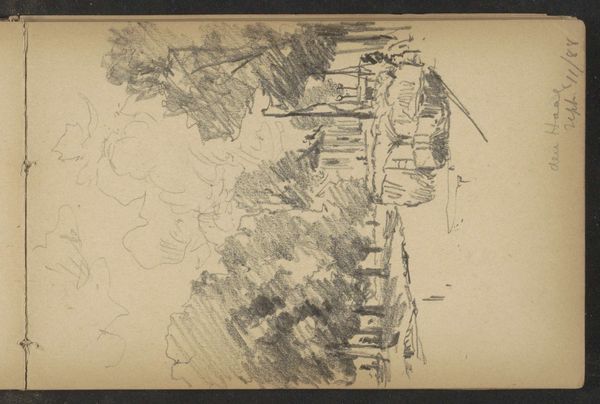
print, etching
#
toned paper
# print
#
etching
#
landscape
#
united-states
#
cityscape
#
realism
Dimensions: 11 15/16 x 10 3/4 in. (30.32 x 27.31 cm) (plate)15 7/8 x 12 3/8 in. (40.32 x 31.43 cm) (sheet)
Copyright: No Copyright - United States
Curator: This etching by Joseph Pennell, made in 1919, is titled "The Lair of the Locos." Editor: It's rather bleak, isn't it? All those train tracks converging and the smoke filling the sky… There's a real sense of oppressive industrialization. Curator: The print offers a complex representation of the modern metropolis and its industrial infrastructure during that period. We have these parallel train tracks vanishing into atmospheric perspective. This symbolizes progress and perhaps even domination, certainly transformation. Editor: But isn't that what's troubling? Domination by whom, or what? The locomotive as a potent, almost monstrous figure of the Machine Age recurs constantly in visual art. Consider the Futurists... Curator: Precisely. This connects to the discourse surrounding urbanism and environmental impact. Note how Pennell represents the city almost devoured by its own mechanics of progress, particularly as these would affect communities in less powerful positions within that very culture. The people are dwarfed by the infrastructure itself. Editor: Right, there are these tiny human figures that underscore a profound tension. A question arises of how urban inhabitants are fundamentally altered in their relationship to natural space and each other by the city’s machinery. We’re faced with the symbols of relentless development at the cost of humanism itself. Even that towering skyscraper in the background seems diminished by all the smoke and industry. Curator: So we may infer, then, a nuanced social commentary on industrial expansion and its implications for human agency within the context of the early 20th century. This echoes the debates among period artists reacting against the effects of power, class, and industry itself. Editor: Yes. While on the surface this cityscape appears realistic, beneath that, Pennell reveals the latent anxieties simmering beneath the surface of a world irrevocably changed. That's potent visual storytelling. Curator: Absolutely. Viewing art from this perspective certainly provides opportunities to expand on its socio-political impact, beyond its surface aesthetics. Editor: And by contemplating the weight of the historical imagery, we uncover some crucial elements that carry into contemporary debates on labor, society, and progress.
Comments
No comments
Be the first to comment and join the conversation on the ultimate creative platform.
